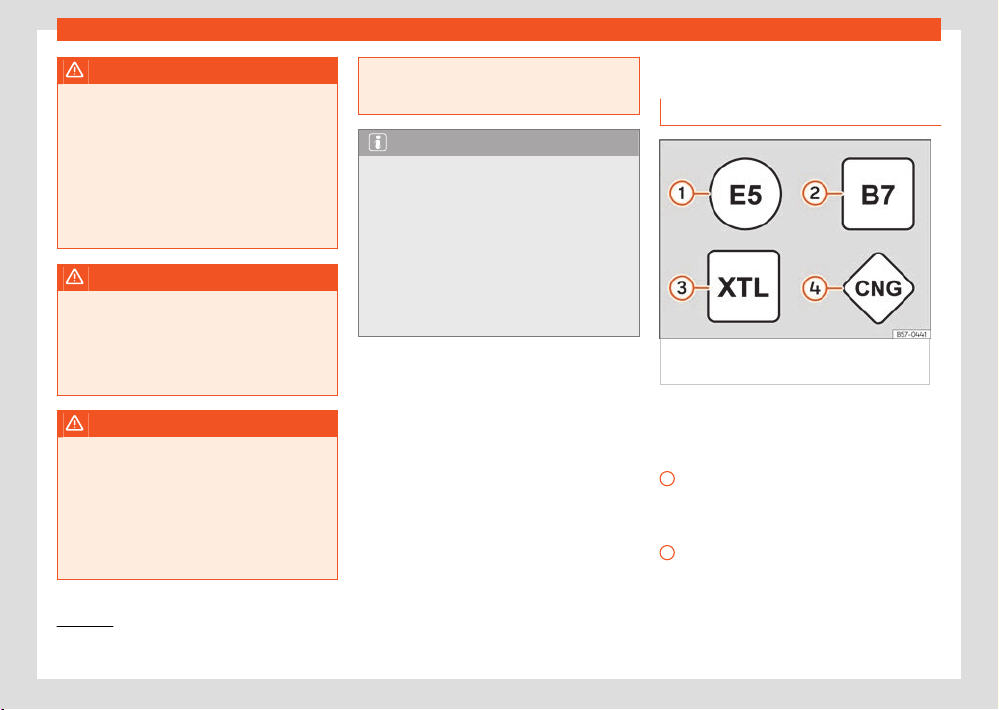Loading ...
Loading ...
Loading ...

238
Fuel and exhaust gas cleaning
1)
Depending upon country.
1
2
WARNING
Natural gas is a highly explosive, easily flam-
mabl
e substance. Incorrect handling of the
natural gas can cause accidents serious
burns and other injuries.
●
Before refuelling with natural gas, engage
the filling mouth correctly. If you can smell
gas, stop refuelling immediately.
●
Read and take note ›››page240, Natural
gas.
WARNING
The vehicle is not suitable for liquefied nat
u-
ral gas (LNG) or liquefied petrol gas (LPG),
so LNG or LPG should not be used under any
circumstances. Liquid gas can cause an ex-
plosion of the natural gas tanks and cause
severe injuries!
WARNING
If the vehicle underbody touches the ground
or in the event of a rear collision, there could
be damage to the natural gas tanks. If dam-
aged, natural gas tanks are full of fuel and
can explode, causing serious or fatal injuries.
●
Even if you don't notice the smell of gas,
take the vehicle to a specialised workshop
immediately and have the natural gas sys-
tem checked. Do not refuel natural gas again
until the nat
ural gas system has been in-
spected.
Note
●
The filling no
zzles of natural gas pumps
can dier in the way they are operated. Ask a
qualified employee at the petrol station to do
the refuelling if you do not know how.
●
Noises heard when refuelling are normal
and do not indicate damage in the system.
●
The vehicle natural gas system is prepared
both for refuelling with a small compressor
(slow refuel) and a large compressor (fast
refuel) at natural gas service stations.
Fuel types
Identification of fuel
s
1)
Fig.148 Identification of fuel
s according to
European Union (EU) Directive 2014/94/
Fuels are identified by dier
ent symbols on
the pump and on your vehicle's tank flap. The
identification serves to prevent confusion when
choosing the fuel.
Petrol with ethanol (“E” stands for Ethanol).
The number indicates the percentage of
ethanol in the petrol. “E5” means, for exam-
ple, an ethanol ratio of 5% max.
Diesel according to EN590 standard. The
number indicates the maximum percent-
age of Biodiesel in the fuel. “B7” means a
maximum of 7% Biodiesel.
Loading ...
Loading ...
Loading ...